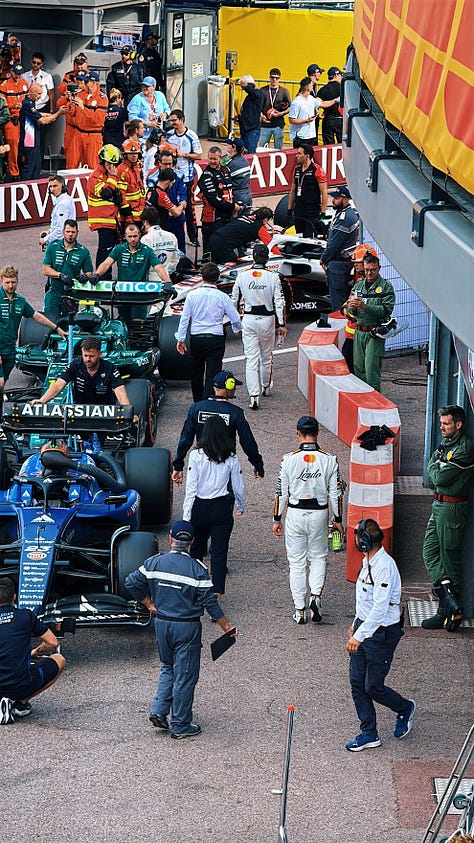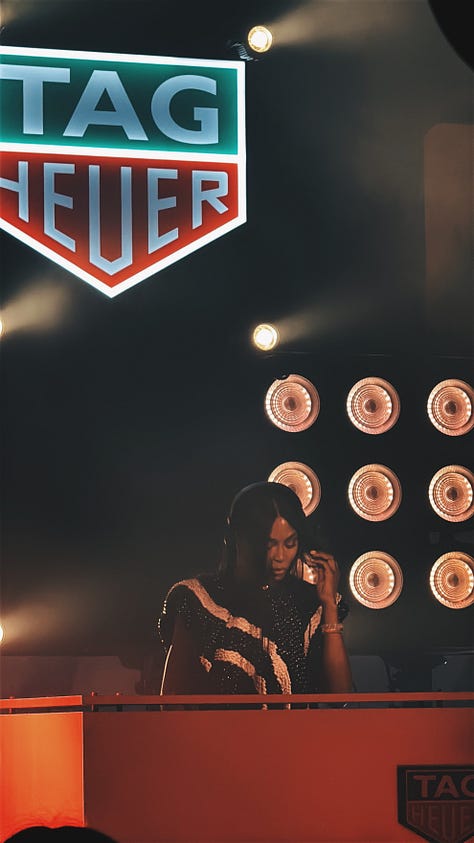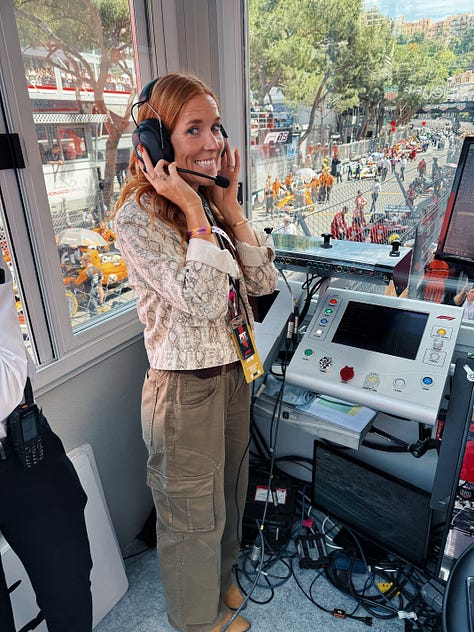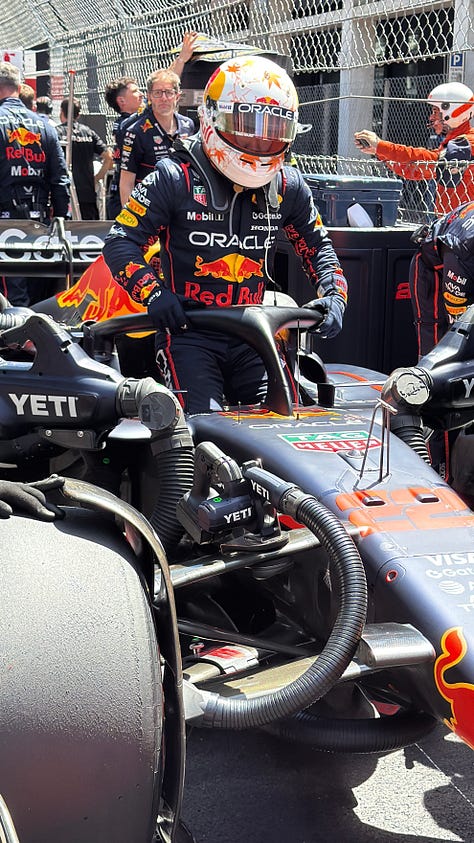Monaco F1 GP: Outdated, Impractical, and Utterly Irreplaceable
Inside the Insane Logistics of the Monaco Grand Prix
Thank you for being here. You are receiving this email because you subscribed to Idée Fixe, the newsletter for curious minds. I’m Toni Cowan-Brown, a tech and F1 commentator. I’ve spent the past five years on the floor of way too many F1, FE, and WEC team garages, learning about the business, politics, and tech of motorsports. I hope you’ll stick around.
⏳ Reading time: 7min
Each May, Formula 1 performs a magic trick: it turns the world’s most impractical race into its most irresistible spectacle. They do this with the support and guidance of the FIA (the governing body) and the ACM (The Automobile Club of Monaco).
The Monaco Grand Prix is the slowest race on the calendar. Overtaking is nearly impossible. Many will say that the action actually happens on Saturday during qualifying. The cars are now too wide, too heavy and too long, the track too narrow, the pit lane cramped. And yet, no trophy is more coveted. No race draws more royalty, billionaires, influencers, and camera crews. No circuit tests a driver’s nerve quite like this one.
All these reasons are why I’ve been more intrigued and interested in watching a Formula E race in Monaco vs. an F1 race. However, I would be lying if the F1 Monaco Grand Prix wasn’t on my bucket list and this year that item on my bucket list got crossed off.
For this race weekend, I got to be embedded with the FIA to get a better understanding of the behind-the-scenes and logistics required to pull this race weekend off. I could not be more grateful for the access, the welcome, openness and kindness I received this past weekend. I’m feeling very grateful to be able to play a small role in this sport I love so much.
My Monaco weekend debrief will be in two parts, and this is part one, where I want to lay out the context, history and paradox of this race. And ultimately answer this one question - how did this contradiction become F1’s crown jewel?
A City That Became a Circuit
First run in 1929, the Monaco Grand Prix was conceived not just as a race, but as a flex - a way for the Automobile Club de Monaco (the ACM) to prove it could stage a "proper" international event. Over the decades, Monaco became synonymous with the glamour of motorsport. Grace Kelly waved the checkered flag. Ayrton Senna made it his personal playground. In a sport that chases speed and technology, Monaco stood still, and still stands still - and that’s part of its charm. But the race is anything but simple - from the driving required to the logistics of the race weekend, it’s all organised chaos.
When I spoke with Oscar Piastri, one of the McLaren Racing drivers, during the OKX livery launch on Wednesday, he explained how the last sector of the race is both the “hardest and the most exciting part of the track”. Lando Norris added that “Monaco is the one you really really want to win”, and win he sure did.
A Logistics Masterclass
To stage the Monaco Grand Prix, the city is rebuilt - literally. Over six weeks, workers install 33 kilometres of barriers, 20,000+ grandstand seats, and entire hospitality complexes along the port. Then, for three weeks after the race, the city returns to normal.
Each night during the race weekend, roads reopen so residents can get home. Construction resumes at 5am the next day. The paddock is crammed into a space that makes most team garages look like closets. There’s no room to breathe, and yet, somehow, it all works.
I visited a few team spaces and garages and was blown away by how much they manage to store and accomplish in such compact setups. Each layout is slightly different. In one garage, for example, the tires were tucked behind the front of the garage -
up a small ramp and stacked around a tree that would normally be standing out on the pavement. Spare parts like the power unit, wings, and floor were all stored upstairs, meaning team members have to carry something as large as an F1 car floor up and down a narrow staircase. Just above the front of the garage sits the pit wall, where the team faces away from the pit lane. And on the second floor, engineers work in a room separated by only a thin wall from the guest hospitality area, which overlooks the track.
A Track That Defies Time
The feels like a track that time (almost) forgot. Modern F1 cars were never meant to race here. They’re too long, too wide, and too powerful. The corners - La Rascasse, the Hairpin, the Swimming Pool - are the same as they were decades ago. But the cars? They’ve evolved beyond recognition.
Compare this: in the 1960s, a Formula 1 car was about 1.5m wide and weighed around 500kg. Today’s machines are over 2m wide and tip the scales at 900+kg. That’s like trying to race a stretch limousine through an alleyway.
And yet, qualifying on Saturday becomes one of the purest tests of driver skill. Monaco rewards perfection - not pace. A twitch too late on the brakes and you’re in the wall.
The Most Analogue Broadcast in a Digital World
Most F1 races are produced by a centralized crew under F1’s own broadcast team, this is the main reason the races are so good to watch on TV - F1 knowns how to film their product. It’s a craft they have been perfecting over decades.
Monaco, however, was still handled by local producer Tele Monte Carlo until 2023. Since then, they get the same treatment as all the other races on the calendar, which also now includes the helicopter camera and aerial drone shots.
There are over 120 cameras used - many manually operated because there’s no room for automated tech. The result is a broadcast that looks more like a feature film than a standard sporting event. It's chaotic, beautiful, and used to be sometimes frustrating to watch but that has now changed - and always iconic.
The Business of Prestige
This is the most expensive race to attend. Yacht berths go for €100,000+, and hotel suites overlook the circuit at €20,000 per night. The Rocher hill offers a free view - but you’ll need to hike and hold your spot early.
Monaco generates over €100M in economic impact across the weekend. Brands love it not because it’s the best race for wheel-to-wheel action, but because it’s a networking dream, a hospitality haven, and a powerful image machine.
Monaco is a marketer’s paradise, where visibility meets velocity. This is also the first year in the history of Formula 1 where the Monaco race has a title sponsor, and that sponsor is TAG Heuer - the official timekeepers of the sport. Just like Miami, brands were activating every moment of the weekend.
Why We Still Love It
So why does it stay on the calendar? Because some things aren’t logical. Monaco is not about overtaking. It’s about storytelling. It's about the impossible made real: racing in a palace garden, threading a V6 turbo hybrid through medieval streets, and transforming an entire nation for three days of noise (it’s no V10 era but the cars are still noisy - come on now) and champagne - which now officially have back on the podium in Formula 1.
It’s proof that in Formula 1, legacy isn’t just nostalgia, it’s leverage. And for one weekend every year, time stands still in Monte Carlo.









🔗 How Rolex Paved the Way for Luxury’s Love Affair With Tennis | Front of Office
When Iga Świątek and Carlos Alcaraz hoisted their trophies on the clay courts of Roland-Garros last year, they had already ditched the terry-cloth sweatbands on their wrists for Rolex watches—the gold crown logo a ubiquitous presence in the professional tennis world. Read here.
🔗 Can Sports Replace Scripted Television Viewership on Broadcast TV? | The Entertainment Strategy Guy
I hate the old journalistic cliche of “seismic shift”, but for at least two channels, it feels like that hypothetical seismic shift happened. Two broadcast channels are making smart scripted content bets, and two broadcast channels are making a very risky bet/sort of getting out of scripted television. All that, plus a look at other cable/broadcast TV show renewals, the big kids show news from two days ago, and a bunch of updates on shows switching streamers or content being removed. Read here.






